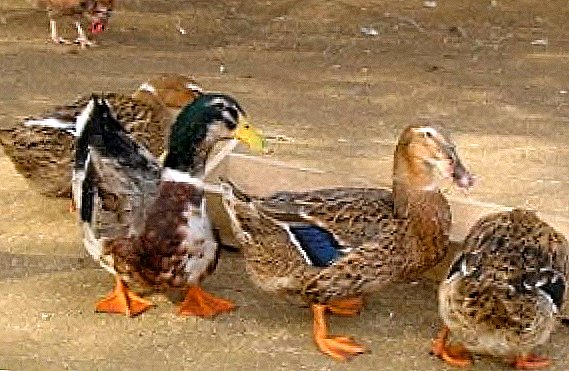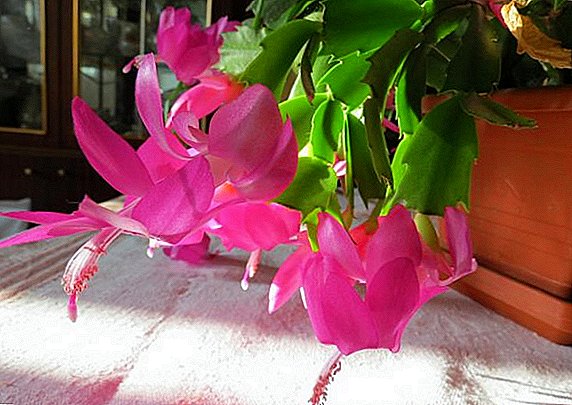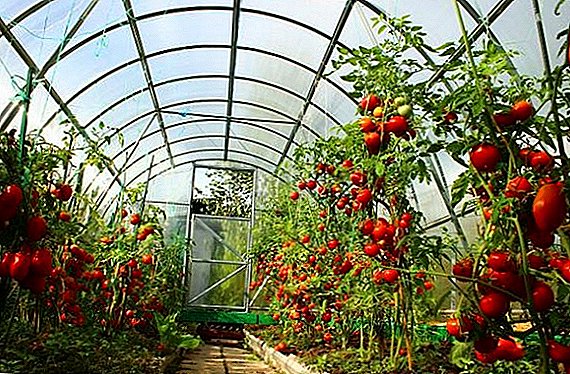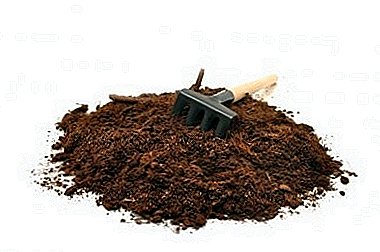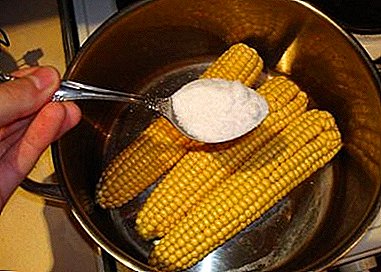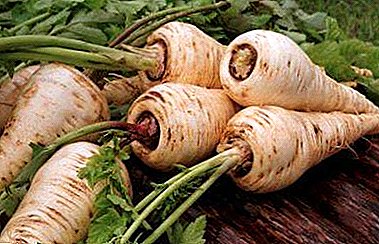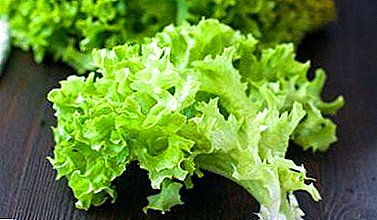
Everyone knows the name of the plant “salad”, but not everyone knows that lettuce is considered a synonym for it. The crispy leaves of this vegetable will complement any dish itself, and its composition will saturate the human body with microelements and vitamins. Both children and adults love it.
The variety of species and varieties will help you choose the product you like for cooking, medicine or cosmetology. We'll tell all about each variety, show in the photo and share the secrets of caring for the plant.
How many species and varieties are they all edible?
Habitat habitat. Lettuce includes 147 species, and about 1000 varieties of varieties are known. Not every one of them is edible. It is necessary to be careful with wild species of lettuce, as some of them are poisonous.
Wild species grow on the banks of rivers, on the roadsides and in the wastelands of Russia, America, Far Eastern countries, Africa and others. They are used for medical purposes, as they have healing properties.
Lettuce varieties can be divided into:
- half spiked;
- heading;
- leafy;
- wild (weeds) species.
Next, we will talk about Tatarsky and other vegetable varieties, show photos.
Half-capped
For semi-capped species, a raised rosette of leaves with a loose head in the center is characteristic.. Salad color can be different shades of green, purple and red-brown. The leaves of the plant are usually rounded with smooth, wavy or jagged edges. The most popular varieties are:
Riga

Established in the Latvian State Farm "Riga". The Latin name sounds like “Lactuca sativa Rijskiy”. The variety is characterized by a large semi-raised rosette with leaves of a light green color. The leaf is large, fan-shaped with wavy edges.
Vegetable is considered early ripening and ready to eat in 50-60 days. Resistant to low temperatures and bolting.
Gentelina (Gentilina)

This species has a beautiful appearance and does not pull the stem up for a long time., similar to the grade "Azart". On a raised rosette grow light green curly, crisp and juicy leaves.
Northern Blush

Leaves with a maroon shade and grooved edges delicate in taste and beautiful in appearance. But these qualities are completely dependent on the conditions and place of cultivation. In the penumbra and greenhouse leaves will be more delicate and oily, and their color will be light green with a pinkish tinge, the so-called blush.
In a cool or sunny place, the plant will be rich burgundy in color with rough and hard sheets. Vegetable is often used for decorating dishes.
Klavir (Klavir)

The loose head has an oval shape. The rounded green leaves are slightly blistered with wavy edges. Lettuce is a mid-season variety, and full maturation occurs on the 50-70 day.
Grand Rapids (Grand Rapid)

Fast growing large plant with green leaves.growing on the outlet. Leaves, corrugated at the edges and wavy in themselves, juicy and crispy. The plant is resistant to flowering, loves sunlight. And in the shade it draws out and gives less leaves.
After a month it can be used for cooking and decorating dishes and snacks. Because of its rich composition, salad is one of the beneficial vegetables.
Azart

A slightly raised rosette with leaves can reach a height of up to 27 cm. The plant has large fan-shaped sheets of bright green color. with wavy edges. Mid-season salad ripens fully at 64-70 days after the first shoots. The disadvantage of the variety is the rapid stretching of the arrow and a short shelf life after harvest.
Snowstorm

The fast-growing variety is bred in the Russian selection. The leaves are placed on the outlet, medium in size with corrugated edges saturated green color. Growing in a well-lit area, after 30 days, you can thin out and harvest.
Eating lettuce will lead to weight loss, so it is recommended during diets and sports.
Head Out
Cabbage looks similar to cabbage, but have more tender and oily leaves.. For varieties characterized by a formed dense or loose head. At first a socket appears and only after 45-60 days a head is formed. You can plant with the help of seeds in open ground or through seedlings. The latter is recommended for these species. The most common are.
Buru

On a horizontal rosette, there are round green leaves with corrugated edges. The head of cabbage is round and dense, ripens at 50-70 days after the first shoots. Differs in high productivity.
Etna

In Latin, it says "Aetna". The salad has a dense rounded head; leaves are green with jagged edges.
The weight of the vegetable reaches 600 grams. Full maturation occurs at 70-90 days.
Commander

It has a rounded dense head with crispy and tender leaves. You can plant immediately in open ground or through seedlings. Harvest can be collected in a half to two months.
Assol

Late-ripening variety has excellent taste and appearance.. Leaves of green with maroon-violet wavy edges are located on a dense head. The socket reaches a height of up to 20 cm, and the head can weigh up to 500 g. It is a late-ripe vegetable (85 days from sowing), resistant to flowering and a decrease in temperature.
Pirate (Pirata)

A large loose head of lettuce reaches a mass of up to 300 g. Oily leaves are green with red, pink or brown shades.
The peculiarity of the early ripe variety (40-45 days from shoot) is its unusual color, excellent taste and high yield.
Ice Queen (Glacies Regina)

Not very dense head begins to form after the appearance of 8 leaves. Leaves are bright green in color with large, wavy and jagged edges.like frost patterns, hence the name. Ripening occurs on the 45-55 day, when the vegetable reaches a mass of up to 500 g
Rosemary (Rosmarinus)

Heading round and dense, reaches medium size. Round-oval leaves of green color with anthocyanin (red-maroon) shade at the edges.
Mowgli (Mowgli)

Large round dense "head" with dark green leaves. They have grooved edges and crispy taste. Harvest can be collected on the 70th day from sowing. A feature of the variety is year-round cultivation.
Sheet
Leaf species form bundles with 5-10 leaflets. It is better to plant in springtime, since in summer the stem is drawn out and the salad becomes bitter in taste. Such species are early ripening, which will allow to get a harvest much earlier than other species.
Kritset (Kricet)

Light green or yellowish wavy leaves with jagged edges are clustered. The plant ripens on 30-45 day from the first shoots. Gentle and pleasant to the taste.
Vegetable resistant to high temperatures and stitching.
Ballet (Lactuca sativa Balet)

Horizontal rosette with green leaves that have highly corrugated edges. It is considered a late-ripening variety. Ripens in 34 days. Easily tolerates lower temperatures and lack of light.
Rosella (Rosella)

Early ripe salad reaches a height of 30 cm. Strongly wavy and corrugated the leaves are green with red burgundy edges. Crisp and fleshy plant ripens on 40-45 day.
Merlot (Merlo)

The variety grows in a compact dense bush with heavily grooved leaves of yellow color with red-pink edges.
The harvest is ready to harvest for 50-55 days, so the plant is considered medium early.
Record

Light green leaves grow a small bush and have a corrugated shape. Maturation occurs at 60-70 days. Plants that have shot an arrow lose all their beneficial properties.therefore, they can not be used.
The types and varieties of lettuce, which belong to the weeds
There are types of lettuce that grow in wastelands, along the road or on the banks of rivers. They are considered to be weeds. Some of them are poisonous.
Siberian (Sibirica)

This perennial plant can reach a height of up to 70 cm. It has whole oblong leaves and small blue flowers.
You can meet on the banks of rivers and lakes, in meadows, in swampy forests and on the roadsides. It is considered a rare plant, therefore it is protected in many territories.
Tatar (Tatarica)

Strugovidnye leaves and bluish-purple flowers grow on a branched stemwhose height can reach up to 100 cm. It grows on the sides of roads, on waste grounds and on the banks of rivers. The plant is a perennial.
Wild, or compass (Lactuca serriola)

On the stem, which can stretch up to 120 cm, grow oblong toothed leaves and yellow small flowers.
How to care for a plant?
Although the plant does not require special care, but in order To get a good harvest, you need to remember a few rules:
- time to loosen the soil and thin out the salad;
- pull up all the weeds;
- water it.
Watering should be done abundantly in the heat once, in a cool time, up to 2-3 times a week. It is advisable to do this in the morning. The plant does not need feeding. Salad is a very useful product, which contains many vitamins and microelements.
A variety of types and varieties will help you choose not only the vegetable you like to taste, but also a beautiful-looking one that can be used to decorate various dishes. Lettuce can be bought in almost any store or easily grown on your site and on the windowsill.


